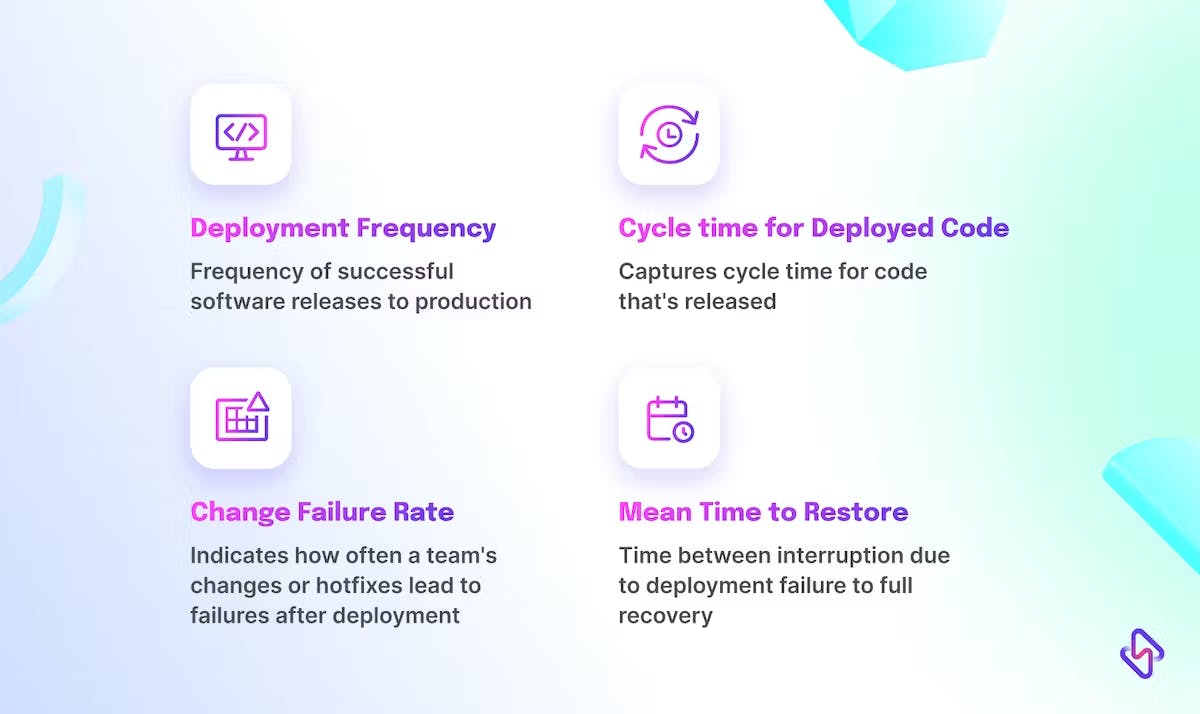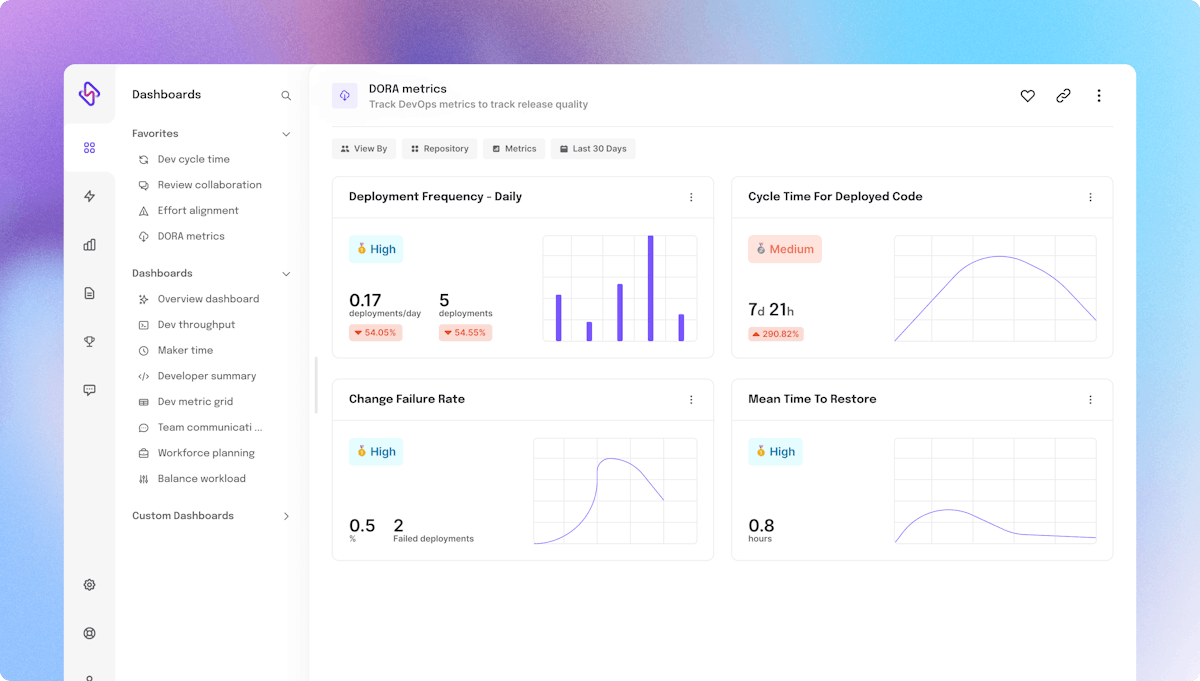Software development teams walk a tightrope every day: delivering new features and fixes quickly while maintaining a rock-solid, reliable system. But how do you measure success in this delicate balancing act? Traditionally, a lack of clear, universally accepted metrics made evaluating team performance a challenge.
Many have attempted, with varying degrees of success, to predict software delivery performance without a clear measurement system. However, a fundamental principle in improvement is this: you can't improve what you don't measure.
This need for a standardized framework led to the development of DORA metrics by a team led by Dr. Nicole Forsgren, Jez Humble, and Gene Kim. Through extensive research, they identified four key metrics that differentiate high-performing engineering teams from the rest.
Improving software delivery performance is one of the main goals of DevOps, and here, tools such as DORA metrics can be used to measure and optimize the performance of the software delivery process.
In this blog, we will discuss DORA metrics, how they align with the principles of DevOps, and their impact on software delivery processes. So keep reading to gauge insights on it!
How DORA Metrics Align with the Principles of DevOps
In a nutshell, DevOps is a collaborative approach to software development that bridges the gap between development and operations teams. It curates faster development cycles, smoother deployments, and higher-quality software. At the end of the day, DevOps allows teams to deliver value to customers more efficiently.
But when it comes to implementing DevOps performance for big projects, do you ever feel like you're lost in the fog? Here’s where DORA metrics can be your guiding thread, helping you!
The beauty of DevOps is that it breaks down the walls between developers and operations, letting them work together seamlessly. This metric amplifies this by giving everyone a bird's-eye view of the entire development process. When you can see how each step impacts the big picture, it keeps everyone motivated and focused on shared goals.
DORA metrics are like little stepping stones on the path to continuous improvement. Every successful deployment, every decrease in errors, becomes a win that propels you forward. This quality of DORA’s output perfectly aligns with the core principles of DevOps, ensuring development and operations are working in perfect harmony to achieve amazing things.
But why exactly are these metrics so important? Let's dive deeper and see how DORA can transform the way you develop software.
💡Additional Read: 4 Key DevOps Metrics for improved efficiency and performance
What is the Importance of DORA Metrics in DevOps?
Incorporating DORA metrics is much more than just tracking numbers; it's about understanding your development process at a deeper level.
DORA metrics act as a compass and point you towards the direction of building high-performing software engineering teams. Developed with inspiration from Lean manufacturing principles, these metrics categorize teams from "low performers" to the industry's "elite." They work particularly well when integrated with DevOps practices.
We've got a detailed blog diving into the nitty-gritty of DORA metrics. But here's the gist: high-performing organizations excel in mainly four areas: Deployment Frequency (DF), Cycle Time (CT), Lead Time for Changes (LT), Mean Time to Restore (MTTR), and Change Failure Rate (CFR).
These areas form the foundation of DORA metrics and offer tech leaders a powerful tool for performance assessment and data-driven decision-making to drive organizational success.
But how exactly do these metrics reflect DevOps processes?





